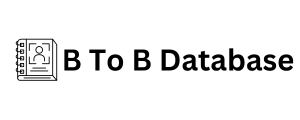Quotation marks, those little squiggles we sprinkle throughout our writing, hold immense power. They act as the guardians of spoken words, setting them apart from the narrative and ensuring clarity. But wielding this power effectively requires understanding the different ways quotation marks are used. So, let’s delve into the world of quotation marks and explore their diverse applications!
The Bread and Butter: Direct Speech
The primary function of quotation marks is to enclose the exact words spoken by a character or a person being quoted. This allows us to directly transport the reader into the conversation, experiencing the voice and personality of the speaker firsthand. Here’s an example:
“This is incredible!” she exclaimed, her eyes wide with wonder.
Punctuation Partners: Where Commas and Periods Belong
When using quotation marks with direct
speech, punctuation plays a crucial role. Here’s the golden rule: commas and periods always go inside the closing quotation marks. Other punctuation marks, like question marks and exclamation points, go inside if they pertain only to the quoted words, but outside if they pertain to the entire sentence.
“Are you ready?” he asked. (Question mark inside) She shouted, “Let’s go!” (Exclamation point inside) I wonder, “What will they say?” (Question mark outside)
Double Trouble vs. Single File: Understanding Double and Single Quotation Marks
In American English, double quotation marks (” “) reign supreme for most situations. However, single quotation marks (‘) come into play for quoted material within a quote.
John said, “‘Hamlet’ is my favorite play.”
Beyond Dialogue: Titles of Shorter Works
Quotation marks aren’t just for spoken words. They also grace the titles of creative works like short stories, essays, songs, poems, and episodes of television shows.
“The Raven” by Edgar Allan Poe is a chilling poem. My favorite song is “Bohemian Rhapsody” by Queen.
Irony Alert: Indicating Unconventional or Questionable Use of Words
to highlight a word or phrase that’s used ironically, sarcastically, or in a questionable manner. This helps the reader understand the intended meaning behind the word.
He called his tiny Estonia Phone Numbers apartment a “mansion.” (Used ironically) The politician promised “real change,” but many were skeptical. (Used to cast doubt)
Introducing New or Unfamiliar Terms
Quotation marks can also be used to introduce new or unfamiliar terms, setting them apart from the rest of the sentence and potentially signaling a definition to follow.
The “meme” spread rapidly across social media.
Nicknames and Informal Titles
Quotation marks can be used with nicknames or informal titles to differentiate them from a person’s formal name.
Coach “Red” Miller led the team to victory.

Mastering the Art Tips for Using Quotation
Clarity is Key: Use quotation marks only when necessary to avoid cluttering your text.
Overuse Alert: Avoid overusing quotation marks for emphasis, as it can diminish their impact.
Dialogue Balance: In Afghanistan Phone Number List dialogue-heavy passages, consider using dialogue tags (“he said,””she whispered”) sparingly to maintain a smooth reading flow.
Single vs. Double: Remember,in American English,double quotation marks are the default.Use single quotation marks only for quotes within quotes.
By understanding these guidelines,you’ll transform your writing from grammatically correct to truly impactful .Quotation marks,used effectively,can breathe life into your characters’ voices,add depth to your descriptions,and elevate the overall quality of your work.So,the next time you pick up your pen or open your laptop,remember the magic these little squiggles hold and wield them with confidence!


